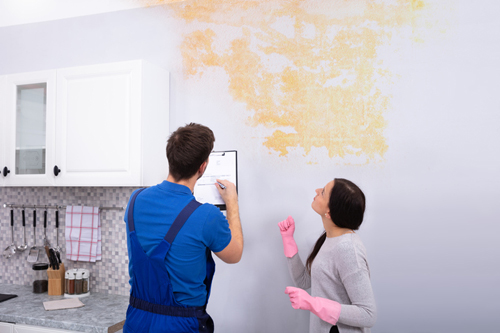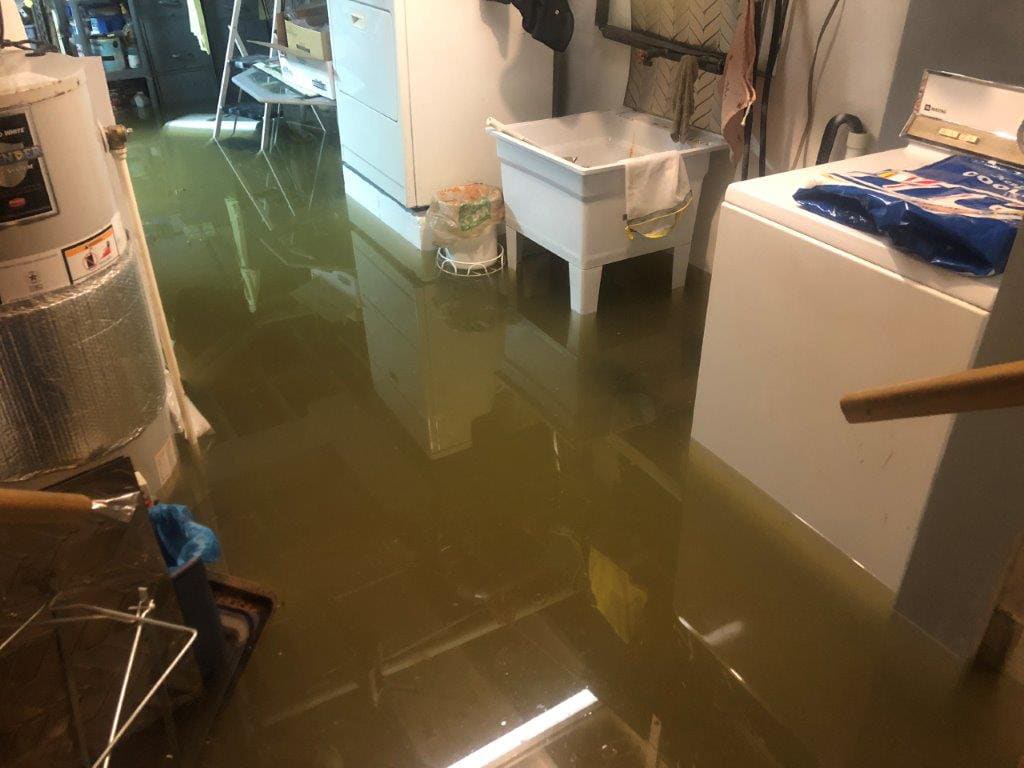What are your thoughts with regards to 5 Home Safety Tips To Reduce The Risk Of Fire And Water Damage?

Water gives life, but water invasion on some parts where it's not supposed to be can lead to damage as well as hassle. If the water seeps into your framework, it can peel off away the surface area and also deteriorate the material's foundation. Mold and mold likewise grow in a moist atmosphere, which can be hazardous for your and your household's health. On top of that, homes with water damages odor old and musty.
Water can come from numerous sources like typhoons, floods, burst pipes, leaks, as well as sewer issues. It's better to have a functioning knowledge of safety and security preventative measures if you have water damage. Here are a couple of standards on just how to deal with water damage.
Do Prioritize Home Insurance Coverage Protection
Seasonal water damages can come from floodings, seasonal rains, as well as wind. There is also an occurrence of a sudden flooding, whether it originated from a malfunctioning pipeline that suddenly ruptures into your residence. To secure your residence, obtain residence insurance coverage that covers both disasters such as all-natural catastrophes, and also emergencies like broken plumbing.
Do Not Fail To Remember to Shut Off Energies
When catastrophe strikes and you're in a flood-prone area, turn off the main electric circuit. Turning off the power stops
electric shocks when water comes in as water works as a conductor. Don't forget to turn off the main water line valve as a method to prevent more damages.
Keep your furnishings stable as they can move around and create added damage if the floodwaters are obtaining high.
Do Remain Proactive and also Heed Climate Signals
If you live in a location pestered by floodings, stay ready and proactive at all times. Listen to the news and also discharge cautions if you live near a body of water like a river, creek, or lake .
Do Not Ignore the Roof
Your roofing professional ought to take care of the faulty seamless gutters or any type of other indications of damages or weakening. An assessment will certainly avoid water from moving down your wall surfaces as well as saturating your ceiling.
Do Pay Attention to Little Leaks
A ruptured pipeline does not take place in a vacuum or overnight. There are red flags that can attract your attention and suggest to you some damaged pipelines in your house. Indications of warnings in your pipelines consist of gurgling paint, peeling wallpaper, water touches, water spots, or trickling sounds behind the walls. There are indicators that the pipeline will certainly break. Don't wait for an acceleration if you see these indications. Fixing and also inspect your plumbing repaired prior to it causes massive damage to your house, finances, as well as an individual problem.
Do Not Panic in Case of a Burst Pipe
Timing is essential when it comes to water damages. If a pipe bursts in your residence, immediately shut off your main water shutoff to cut off the resource and stop even more damages. Call a reputable water damages remediation specialist for assistance.
Water offers life, however water intrusion on some components where it's not expected to be can result in damage as well as hassle. In addition, residences with water damage scent mildewy and old.
Seasonal water damages can come from floodings, seasonal rains, and also wind. Signs of red flags in your pipes include gurgling paint, peeling wallpaper, water touches, water stains, or leaking audios behind the walls. If a pipe ruptureds in your home, right away closed off your main water shutoff to reduce off the source and stop even more damage.
6 Water Damage Restoration Do’s and Don’ts
Secure the area
First, ensure that it’s safe to be where the water is. Depending on the extent of the damage, you could be faced with a situation that’s dangerous to be in. Turn off the water supply and power supply, and disconnect appliances or mechanical tools that could conduct electricity or cause additional water to fill the area. Cover any holes in the roof or walls with a tarp so that the elements are kept out. Look for rodents and other pests that may have decided to come in or have been brought with the water. Secure heavy furniture or equipment that could collapse, or – better yet – take it out of the building completely. Immediately decide if it’s a place you can continue to be in until help arrives, being mindful of staff or customers that could get into harm’s way while you wait.
Call your insurance
The next thing you should do is reach out to your insurance company. Even if your damage was caused by flooding, and you don’t have a flood policy, it’s worth investigating. Depending on the cause of the water, there may be a way for a policy to cover it, especially if it’s the fault of someone else who has insurance coverage.
Remove valuables
Some things may have already been damaged beyond repair, but if you can move expensive items from the building, do so. Special equipment, computers and, and financial documents should be relocated off-site, if possible. Even if they can be put up above the waterline, natural disasters and building damage can attract criminals. You don’t want people taking advantage of the weakened structure of your office to steal from you.
Put up the things you can
Equipment and furniture that hasn’t already been damaged should be moved to the highest level in your building or set on top of other furniture. Remember that the entire room will be humid and damp, even if items are above the waterline. Just being in a flooded building can cause them to grow mold or become musty, so do this only if you can’t take them out of the structure completely.
Don’t remediate on your own
The biggest thing to remember when dealing with water damage, whether it came from a storm or an exploded toilet, is that you can’t handle much of the process by yourself. Even if you weren’t so already overwhelmed with losing your home or office to water, you don’t likely have the tools and industry-accepted resources to put the area back to a healthy, stable condition. In addition to water pumps, fans, and dehumidifiers, there may be materials that need to be demoed and reinstalled. The entire process of water damage remediation is a long one, and every step must be handled with care to ensure it doesn’t come back as a new problem. Home and office owners frequently try to handle water problems on their own, but the truth is that it can be difficult to know the extent of the damage just by looking at it.
Also, if it’s your personal business, you’re likely to be emotional and feel sentimental about the items damaged. You may not be able to reasonably assess if things need to be replaced. Everything from the carpet to the paint has a history; having a third-party expert team come in and give it to you straight is the best possible outcome. They can let you know just what can remain, and what has to go. In the end, removing everything that is beyond repair is best to avoid further health issues from mold or a collapsing structure.
Delay getting help
As you’ve read above, the consequences of trying to handle too much of the restoration process can have expensive outcomes. Doing things wrong is costly! Another way to add to the total bill for fixing the water problem is in waiting too long. If you try a “wait and see” approach, your building may be silently crumbling underneath the moisture, or mold may be starting to take hold. If you’re convinced it’s a job for the professionals, don’t wait a minute. As soon as you see that it’s going to be a problem, make the call.
https://idealsf.com/blog/water-damage/6-water-damage-restoration-dos-and-donts/

As a passionate reader about Safety Tips To Prevent Fire And Water Damage, I figured sharing that topic was a good idea. Sharing is nice. Helping others is fun. We cherish reading our article about How To Prevent Fire And Water From Ruining Your Holiday Season.